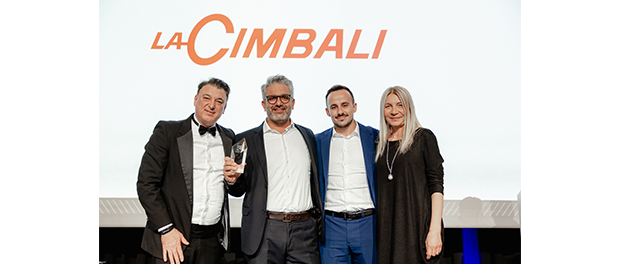
Climate change is a reality. The impacts are being felt more and more and the risks for property owners, especially those in mountain resorts or near the coast, are real. Companies have an essential role to play in helping our society to transition to low carbon consumption and a sustainable lifestyle.
At Amenitiz, we’re committing to becoming a carbon-neutral company and contributing to the green transition of the hospitality industry.
In order to start this journey, our first step was to assess our impact on climate change. We, therefore, estimated our carbon footprint to better understand the situation. By transparently sharing details of our approach, we hope to make it easier for other companies to move towards carbon neutrality.
We have chosen to assess our carbon footprint over the last 12 months: as we are growing fast, it was preferable to take into account recent data.
From mid-2019 to mid-2020, Amenitiz’s activities generated ~28 tons of CO2e.
Here’s what we found out:
Our customers’ websites ~8.5t CO2e
We don’t necessarily think a website would have an impact on global warming, but it does. In total, digital technology accounts for 3.7% of global emissions. To be used, a website requires electricity. The user’s computer or smartphone, the network and the data centre where the data is hosted all consume electricity. To estimate the impact of the websites created via our platform, we have estimated the average impact of the pages and multiplied by the number of pages viewed per year. As a tech company, we were expecting to have a bigger CO2e impact on this side, and are therefore happy with the results! However, we will still try to limit this source of CO2e, especially thanks to image compressions tools.

Platform and Amenitiz.io website ~2.2t CO2e
We did the same calculation as we had for our clients’ websites, but this time for our website, blog and platform.
Internet services ~0.8t CO2e
We have considered two categories of services: videoconferencing (Google Meet) and cloud hosting (Google Drive).
For video conferencing, we expected a higher result (550 kg of CO2e) because we use this service on a daily basis. Thanks to these tools, we do not need to travel. For the calculation, we estimated the number of hours spent on video calls via an internal survey and used a video streaming converter, as there is no precise converter for this type of service yet.
As far as storage is concerned, we used the information communicated via Google Admin and used a specific emission factor.
Transport ~2.4t CO2e
Over the period, we only had one business trip, for a trade show in Nice, France. In addition, the majority of employees come to work by public transport, bicycle or on foot. Our carbon footprint is therefore very small for this category. Our offices are located in the city centre of Barcelona, making it easy to reach on foot and by public transport.
Employees’ consumption ~1.2t CO2e
We have only taken into account our coffee consumption as well as the team afterworks financed by the company. Lunch is not paid for by the company and was therefore not included in this study. To our surprise, the coffee and beer we consume has a real impact on our carbon footprint (5% of our footprint)! It’s hard to work without coffee or team moments, but it’s useful to be aware of the impact of our daily consumption.
Office rental ~1.1t CO2
Our office is located in an old building in the centre of Barcelona. As the construction took place more than 50 years ago, we have only taken into account the impact of the recent refurbishment work, using a factor of 35 kg of CO2e/m2.
Furniture & household appliances ~0.8t CO2
We bought furniture (tables, chairs, etc.) and household appliances (oven, dishwasher, etc.) when we moved in. These purchases have a strong impact but are depreciated over their lifetime, approximately 9 years. We used data from the French organisation ADEME to estimate this source of emissions. Buying second-hand equipment is an option that seems interesting to us and that we would like to explore.
Hardware ~2.7t CO2e
Same calculation as for furniture and appliances. Every employee at Amenitiz is provided with a Macbook, a screen, a headset, a keyboard and a mouse. Everything is bought new, which explains the high impact of this category.
Electricity ~2.8t CO2e
Carbon intensity – the amount of CO2 emitted per kWh – varies from country to country. In Spain it is 238 g CO2e/kWh while in France it is only 79 g CO2e/kWh. We consume electricity for air-conditioning, heating (rarely), lighting and powering equipment.
Air conditioning (leaks) ~1.1t CO2e
Every air conditioner has an impact because of small refrigerant leaks. These leaks have a very high impact, about 1000 times more powerful than CO2, on climate change. We have our three air conditioners checked by an operator once a year.
What we learnt
Our overall carbon footprint is quite small in comparison with other tech companies. This is because we travel very little and spend only what we need to work efficiently. Our challenge is not so much to reduce our footprint as to try to keep it low as we grow. Indeed, our aim is to grow rapidly. Increasing the number of employees will undeniably involve new sources of emissions. It is therefore our duty to regularly monitor our carbon emissions!
There is room for improvement in the creation of our websites and the development of our platform. We will use image compression tools and talk about eco-design practices with our developers. In addition, we will accurately monitor the impact of our platform and website builder.
Finally, if we compare Amenitiz’s footprint (23.7 tons a year) to our global customers’ carbon footprint (average of 35,000 tons of CO2e per year), it is obvious that our contribution resides in helping our customers. This estimation has been calculated by taking into account the number of clients we had in June 2020 x an average occupation rate of 40% for an average of 10 rooms per property x day of the year)
If we help them all reduce their footprint by even 1%, the gain would already be around 3,000 tons of CO2e ( ~ 10.000 nights in a hotel)! To do this, we provide them with resources (offer to estimate their carbon footprint, blog articles, white paper) to help them adopt good practices, which will in particular enable them to have new opportunities in sustainable tourism.
Our next steps
One of our next steps is to contribute to carbon offsetting projects so that Amenitiz can be carbon neutral. Our idea is to purchase enough certified carbon credits to offset our estimated carbon footprint and make us carbon neutral. We are currently looking for interesting projects to support on ClimateSeed, Pachama and Purproject. We welcome your feedback on this!
We are also thinking about ways to raise awareness among our employees, by creating a team of volunteers dedicated to work on our environmental challenges . This team will be set up at the end of the month (September 2020) and will aim to establish a roadmap of actions to be implemented within the company, which will be presented and monitored by all employees.
We will keep you posted on our ecological (r)evolution!
